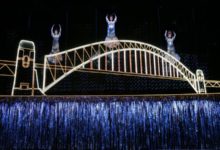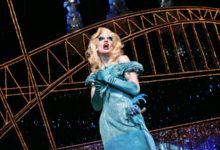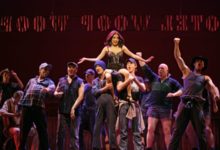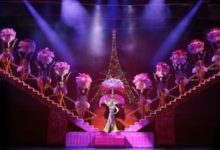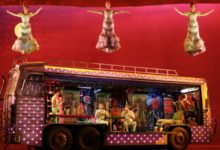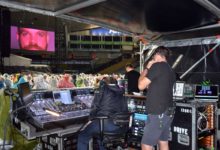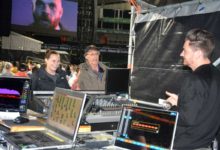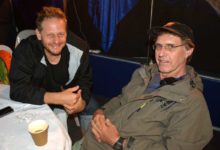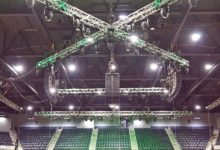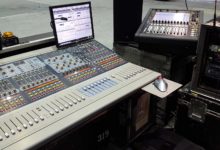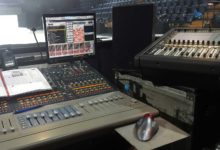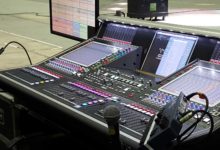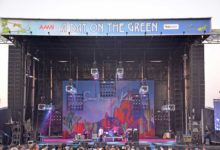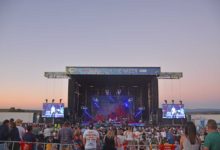Priscilla Queen of the Desert
Ten years on and Michael Waters tells a different story
After winning a glittering array of international awards on Broadway, the West End, Europe and Asia, Simon Phillips’ spectacular production Priscilla Queen of the Desert has returned to Australia for its 10th anniversary celebration tour.
Opening at Melbourne’s Regent Theatre, the show is set to tour the country over the coming months with all audio supplied by JPJ Audio.
Sound designer Michael Waters created the original production over a decade ago and since then he says that the evolution of digital technology is clearly the biggest change.
“We started with a digital platform of a Yamaha PM5d but since then I’ve moved onto a DiGiCo system which makes everything a lot more flexible,” he commented. “It sounds great and combined with the Aviom system, it makes it all streamlined. The progression of the networked L-Acoustics amplifiers has made a big difference too. Ten years ago we were using Crown 5002 amplifiers which sounded awesome but everything eventually had to move into the digital realm. Having the flexibility of networked processors, coupled with remote control accessibility via my iPad, means I can wander the building and mix off my iPad. We didn’t have that technology at our disposal back then!”
The Stealth Core 2 infrastructure with the DiGiCo means there is a lot more processing available on their consoles. With the SD10 that Michael uses, he goes direct from the DiGiCo system, from the SD rack straight into the LA8 amplifiers – basically cutting out a drive system.
“A lot of the system processing is done on the console itself, which in turn is controlled by the iPad,” he added. “I have complete flexibility in control of the sound system including the mix itself just from the one app. There is also processing going on with the LA8s and that’s also controlled from the iPad via Network Manager.”
 Michael is still using an L-Acoustics dV-Dosc PA system, describing it as fantastic, with the configuration used at Melbourne’s Regent Theatre very similar to the original. The only difference is the addition of a KARA centre cluster and several more delay subs to ensure the disco beats are everywhere and with even coverage in the huge barn that is the Regent.
Michael is still using an L-Acoustics dV-Dosc PA system, describing it as fantastic, with the configuration used at Melbourne’s Regent Theatre very similar to the original. The only difference is the addition of a KARA centre cluster and several more delay subs to ensure the disco beats are everywhere and with even coverage in the huge barn that is the Regent.
“There are quite a lot of L-Acoustics subs in the system – DV-subs on each of the four L/R arrays, SB28’s on the aprons, SB18’s on the Delay Cluster and then spread out in the stalls,” said Michael. “In the dress circle there are Meyer 650P’s and then a pair of L-Acoustics SB118 subs above the mix position in the roof. That way we can keep the vibe jumping along all the way to the back!”
Microphones are still DPA 4066, double mic’ed with a DPA 4061 for the three Queens and also the three Divas who fly through the air. All DPA’s are run on Shure UR-4D wireless systems and Shure Micro Belt packs.
“I had to go with the DPA 4066 because of the amount of head dresses that all require quick changes,” explained Michael. “If we were to use lapel mics on the forehead, they would just get ripped off. The DPA 4066 also allows for a higher SPL which is good as there are so many disco come rock numbers in the show. The only exception is the young boy who uses a DPA 4061 because his contribution is only in quiet scenes.”
Microphones for the band include Shure Beta 52, Beta 91 for the kick, Beta 57 and Beyerdynamic Opus 87 for the toms, and a smattering of Audio Technica AT4050’s, Firefly DI on the bass and a couple of Coles 4038 ribbon mics on trumpet and saxophone, which sound very warm and smooth in the high end.
Gallery


